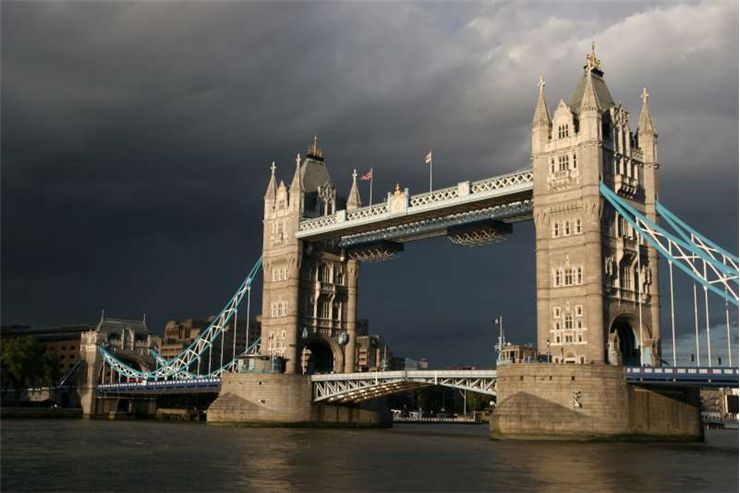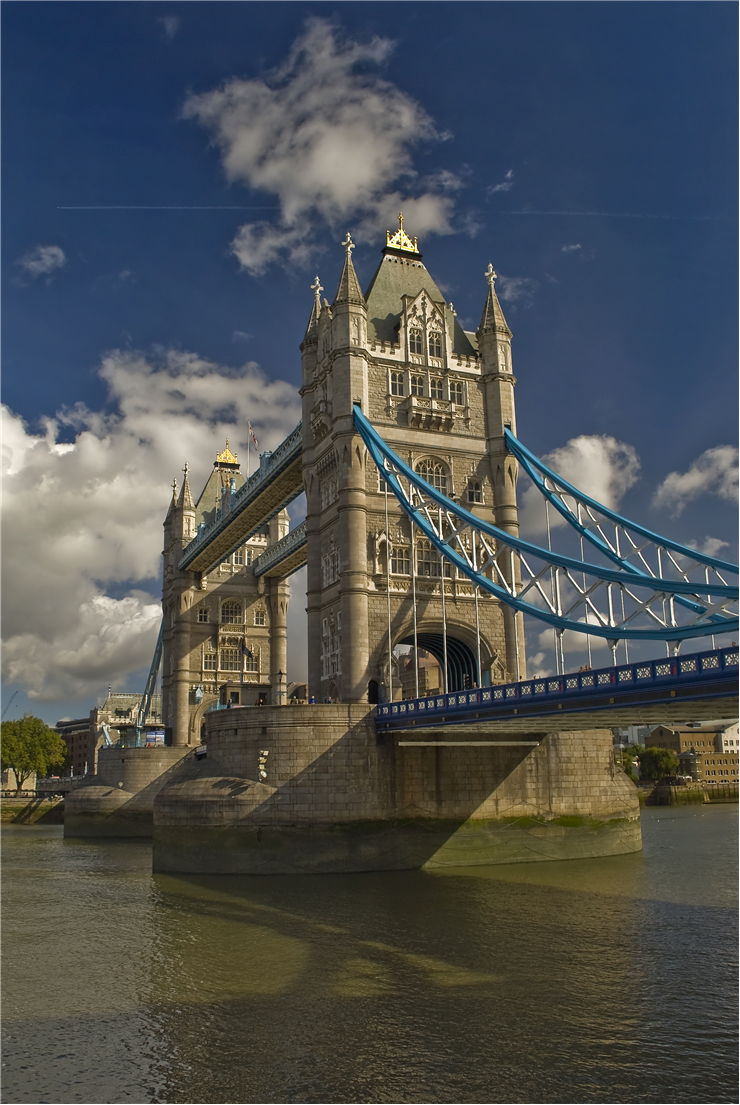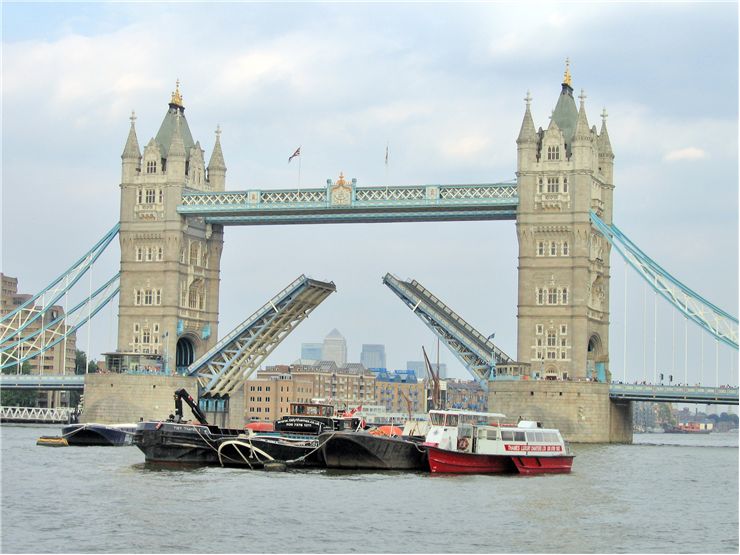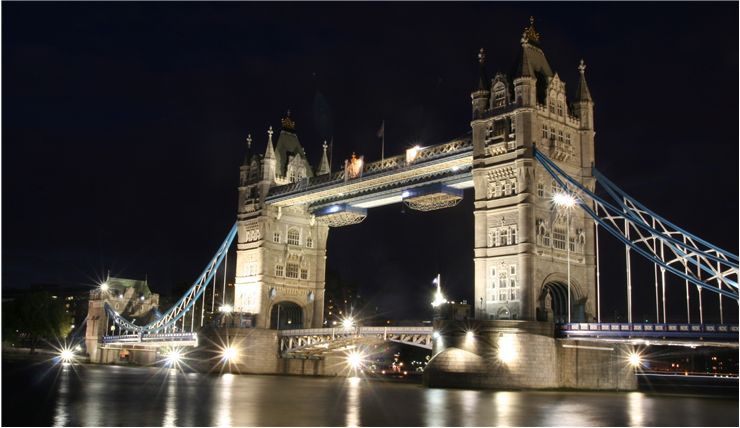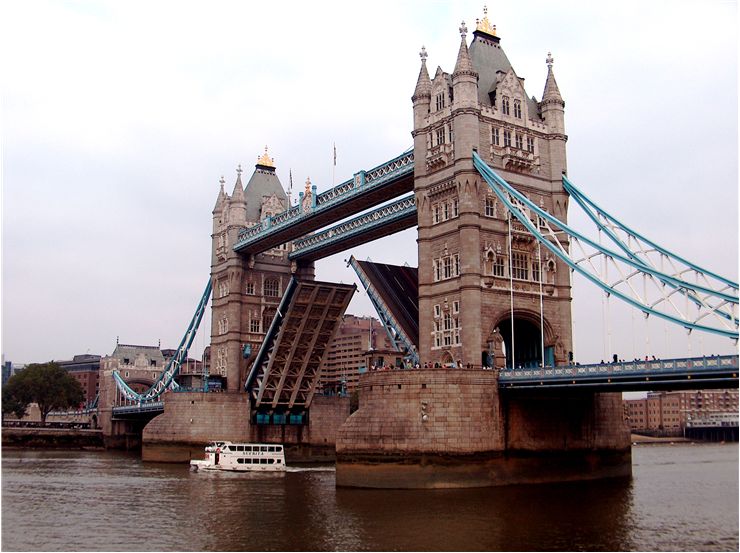Facts and History of Tower Bridge in London
Tower Bridge, one of the London’s most famous landmarks, is a bascule and suspension bridge on River Thames. It has two towers, in Victorian Gothic style, that are connected with two walkways that are constructed so they can resist horizontal forces from suspended parts of the bridge. Base of each tower holds machines that lift two parts of the bridge so bridge can allow passing of river traffic beneath it. Tower Bridge is located close to the Tower of London from which it got its name.
East End of London reached so high commercial development in the second half of 19th that it demanded one more river crossing. In the 1876, a “Special Bridge or Subway Committee” was formed to find a solution. Some 50 designs were submitted, but because of much controversy, it took eight years for one design to be approved. It was a design submitted by Sir Horace Jones, the City Architect that he designed in collaboration with John Wolfe Barry. Construction began in 1886 and lasted until 1894. Five companies and 432 workers worked on it. It has 70,000 tons of concrete in foundations only and some 10,000 tons of steel and is covered in Cornish granite and Portland stone as means of protection for steel structure and as an esthetic element. Victorian Gothic style is used to esthetically integrate Tower Bridge with nearby Tower of London. Prince and Princess of Wales officially opened the bridge on 30th of June 1894. The bridge connected Horselydown Lane, today Tower Bridge Road, with Iron Gate, today Tower Bridge Approach.
The bridge is close to the harbor so it was necessary for it to be made in a way that it can allow passing of ships. Machines that lift bascules were hydraulic steam machines until 1974 when they were replaced with electro-hydraulic drive system. Some of the old steam machines are left as a tourist attraction and is a part of the museum tour of a Tower Bridge.
Tower Bridge is still in function and is still a major crossing of the Thames. Daily, some 40,000 people cross it in both directions. While it was controlled manually from the beginning, in 2000, a computer controls system was installed so bascules could be raised and lowered remotely. Bascules are raised around 3 times a day and a 24 hours' notice is needed from a ship that needs pass.
After they were closed in 1910, walkways were reopened in 1982 as a part of a Tower Bridge Exhibition. The Exhibition shows photos, displays and films to tell a history of Tower Bridge and is housed in bridge’s towers, walkways of the bridge and in Victorian engine rooms.
In 2008, Bridge Tower entered renovations that lasted four years. Metal parts were stripped of original paint and are repainted in white and blue. New lights, that are both functional and atmospheric, were installed in walkways and suspension chains were repainted with six layers of protective paint. Next renovations are planned in 25 years.
| Name | Tower Bridge |
| Country | United Kingdom |
| Crosses | River Thames |
| Location | UK, England, London |
| Type/Design/Architectural Style | Bascule bridge, Suspension bridge |
| Designer/Architect | Horace Jones, George D Stephenson |
| Carries | A100 Tower Bridge Road |
| Total Lenght | 244 metres (801 ft) |
| Span / Longest Span | 61 metres (200 ft) |
| Clerance Bellow | 8.6 metres (28 ft) (closed), 42.5 metres (139 ft) (open) |
| Construction Begin | 1886 |
| Construction End | 1894 |
| Opened | 30 June 1894 |
| Maintained by | Bridge House Estates |
| Heritage Status | Grade I listed structure |
